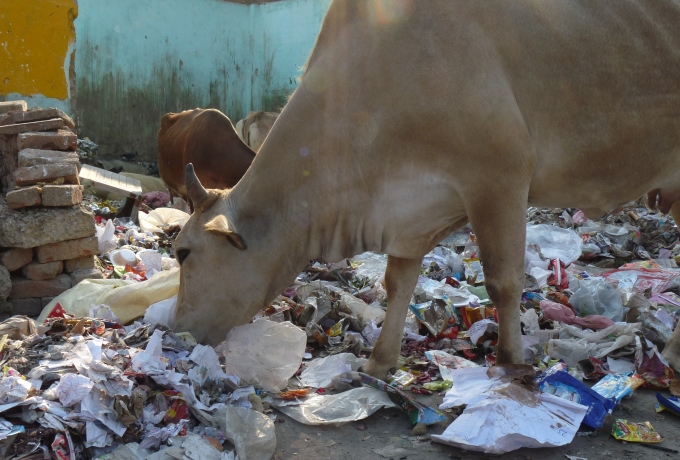Environment Day Reminder of the Status of Environment in Delhi

5th June is celebrated as the World Environment Day since 1972. It marks the day when the United Nations Conference on the Human Environment (or the Stockholm Conference) convened with participation from 113 nations. This further led to the setting up of the United Nations Environment Programme (UNEP). 5th June is the date when global action towards environmental protection receives a fresh impetus.
The Environment Day each year usually revolves around a specific theme. The Environment Day theme this year is Beat Plastic Pollution, and the host country of this event this year happens to be India! The celebrations have already begun in New Delhi, with the Ministry of Environment Forest & Climate Change (MoEFCC) hosting a four day long International Event talking about various aspects of ‘our common environment’. Various other Ministries of the Government of India have also initiated campaigns and drives to raise environmental awareness, the most prominent among them being the Beat Plastic Pollution Declaration from the Taj Mahal.
Environment Day is a good opportunity to remind ourselves of the large number of environmental challenges being faced by Delhi. Let us also use this occasion to assess the status of environment in Delhi.
Plastic waste, a significant percentage of the municipal waste, and municipal waste itself have become a major challenge in Delhi NCR. Managing Delhi’s solid waste is no longer possible through the existing and overflowing landfills of Bhalswa, Ghazipur and Okhla. And the Government has not been able to find and allocate land for a new landfill site. As a result, these landfills continue to receive tonnes of solid waste every day and continue to contribute to air and water pollution in Delhi.
The different agencies of the Delhi and Central Government (both of which manage Delhi) therefore have lot of work to do in finding such a site and reducing the increasing waste load of the city. Can we expect less (Conferences) talk and more work here? The answer is the difference between sustainable and unsustainable urban growth of Delhi.
The air pollution scenario in Delhi is already very concerning. The Air Quality Index of Delhi continues to maintain itself at Very Unhealthy to Hazardous Levels. Addressing this challenges requires an interdisciplinary understanding of the problem and everything from drastically improving the public transport, carrying out systematic plantation of trees and plants, protection of the Delhi Ridge, implementing policies for discouraging activities that pollute Delhi’s air and greater networking with neighbouring states. Is Delhi (Government) up for the challenge? We will get to know near Deepawali this year, during the onset of the winter months.
River Yamuna continues to carry polluted, sewage-quality water as it flows in Delhi between the Wazirabad and the Okhla barrages. Surface water in Delhi remains polluted as almost all of it is stopped behind the Wazirabad barrage for drinking purpose. Despite this, parts of Delhi have again gone dry this summer and availability of drinking water is perhaps Delhi’s greatest environmental and sustainability challenge. A recent news article in a national daily has alerted that not a single region in Delhi has recorded a significant rise in ground water level during the last two decades. The Government must therefore urgently focus on optimizing Delhi’s water demand and saving the rapidly disappearing wetlands in the city.
Clearly, the three basic parts of our environment — air, water and land — are significantly polluted and are calling for urgent action. Since these are also required for our survival, no justification can be given for delay or inaction in addressing these environmental challenges. There is clearly no time for hosting events, conferences or environmental functions when all aspects of the environment around us are giving us clear signs of despair and helplessness.
The large number of traffic jams everywhere in Delhi, the shrinking and disappearance of the newly declared State Bird sparrow, the need for carrying out sealing and demolitions all around are examples of both the decline of environmental health of Delhi and the lack of timely action by State machinery to regulate and protect Delhi’s urban ecology. Let 5th June, the World Environment Day, be a reminder to all of us that there is a lot that needs to be done to protect and conserve the declining status of environment in Delhi. And that the solution is found outside the four walls of conference halls, and through direct action amidst the greens and blues of India’s National Capital city.
This Environment Day, let us begin by cleaning up our surroundings and realizing that it is we who need the environment and its services, and not the other way around.




Beat plastic pollution – 5 June learn
http://worldenvironmentday.global/hi
and
http://worldenvironmentday.global/en